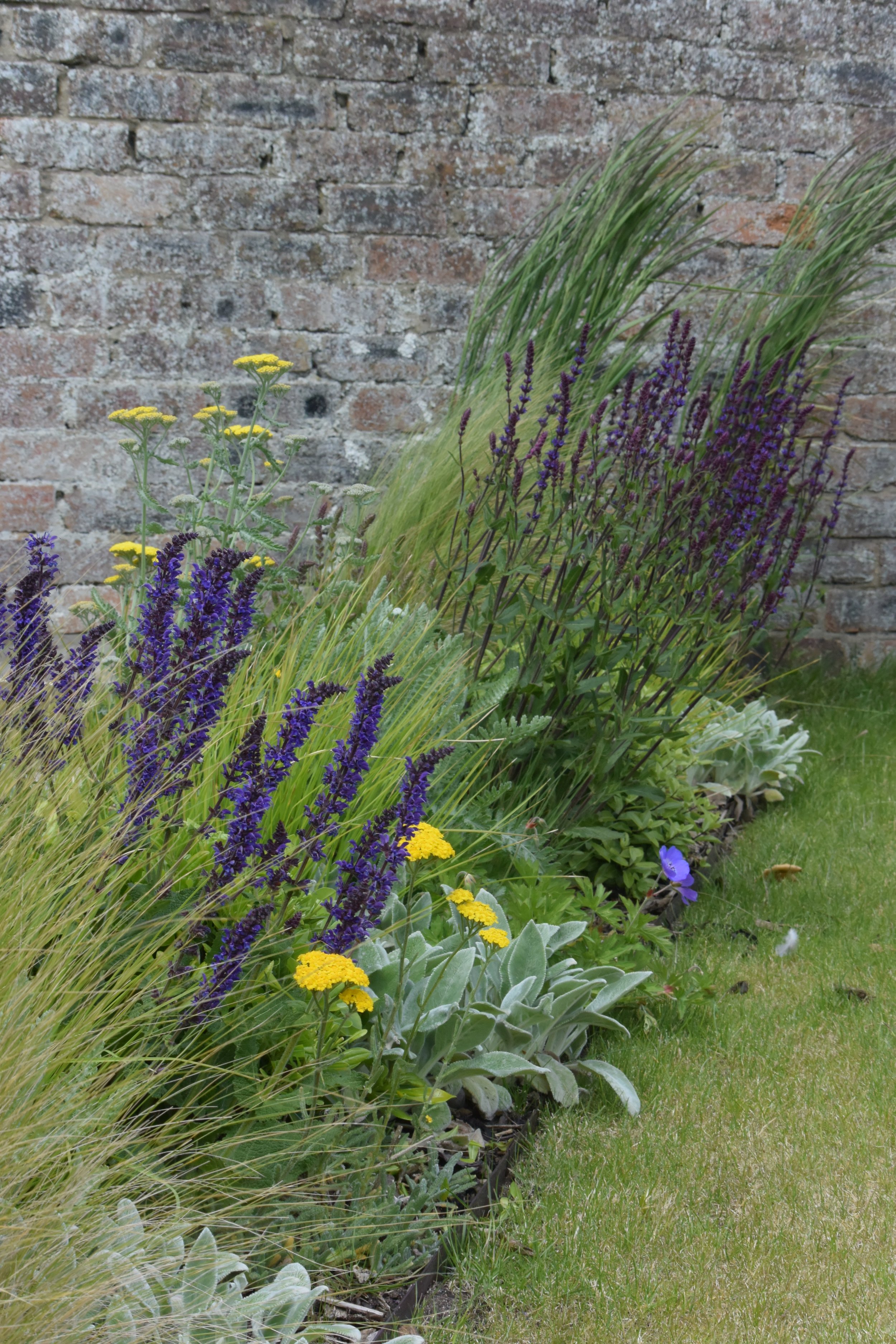guidance on designing your garden border
If you want to transform your garden, especially if you only have an expansive area of lawn, you might want to create a garden border.
By adding a plant border into your garden, you will both increase the biodiversity in your space, by attracting beneficial insects and pollinators, and create a dynamic space with aesthetic that changes as the seasons evolve.
First of all, you will need to examine your garden space properly.
Make a note of the Sun’s movement around your space. It is best to position your garden border so that it benefits from exposure to the Sun.
But even if your garden is in shade, this doesn’t have to limit you in your design process. There is a great variety of plants for shade that could be used in your plant border design.
Feel your soil. Check if it is a free draining soil or maybe it holds the moisture. You might want to do a simple soil test.
Having this information will help you with selecting the right plants for your plant border design.
The next step is to make a list of plants that would thrive in the conditions in your garden.
Your plant border design doesn’t need to be very complicated. You might want to narrow down your list to just a few varieties, that you will repeat across your newly created garden border.
Spend some time experimenting with colour and form combinations. Creating a plant border design is a very creative process, as it allows you to work with colours, textures and forms of the plants.
If you want to create a garden border along a fence, you might want to start with planting taller plants at the back of your border. Tall plants will create a good background, as well as will act as additional screening.
Adding a climbing plant will help with covering the fencing, making a good all year-round green backdrop for your plant border design.
Some examples of evergreen climbers are Clematis ‘Winter Beauty’ or Star jasmine.
There is a variety of tall growing perennial plants that will add good structure to your border design. Tall plants such as: Eupatorium, Veronicastrum, Calamagrostis grass, Verbena bonariensis, will also help showcase the other plants in your plant border design beautifully.
One way to start designing a plant border is to select an ornamental, evergreen grass, that can be repeated in small clusters across your garden border to create a matrix, into which you can add other perennial plants.
Having this grassy matrix will make your overall planting look more harmonious, binding the whole design together. The repeated clusters of ornamental grass will also make your garden border stand out, especially during the winter months, when most perennials will fade or disappear.
A garden border with Stachys, Salvias, Achillea tomentosa and ornamental grasses
Plant your selection of perennials amongst ornamental grasses in small groups, usually comprising 3 or 5 plants. By repeating your plants in small groups this way, you will create a more balanced planting design.
Some examples of plants that work well in a sunny plant border are: Salvia caradonna, Nepeta, Geranium ‘Rozanne’, Rudbeckias, Monarda, Achilleas. Be playful and don’t be afraid to mix and match different colours and shapes.
At the edge of your plant border design you should position plants that are low growing. Stachys, Prunella, Ajuga reptans, Achillea tomentosa or Persicaria ‘Darjeeling Red’ are some of the examples of lower growing plants, that could work as a good ‘finishing touch’ for your plant border design. They also provide important ground cover, suppressing ‘weeds’ and acting as a living matt, that limits water evaporation from the soil.
Creating new garden border will definitely make your garden look more attractive and will bring more wildlife into your space.
Working on a plant border design can be a very enjoyable process, especially when selecting from the vast array of perennial plants that are available.
Watching how your garden border is changing its appearance as the seasons progress, will add another dimension into your garden experience, encouraging to take a closer look at the perennial plants and their fascinating structures.



